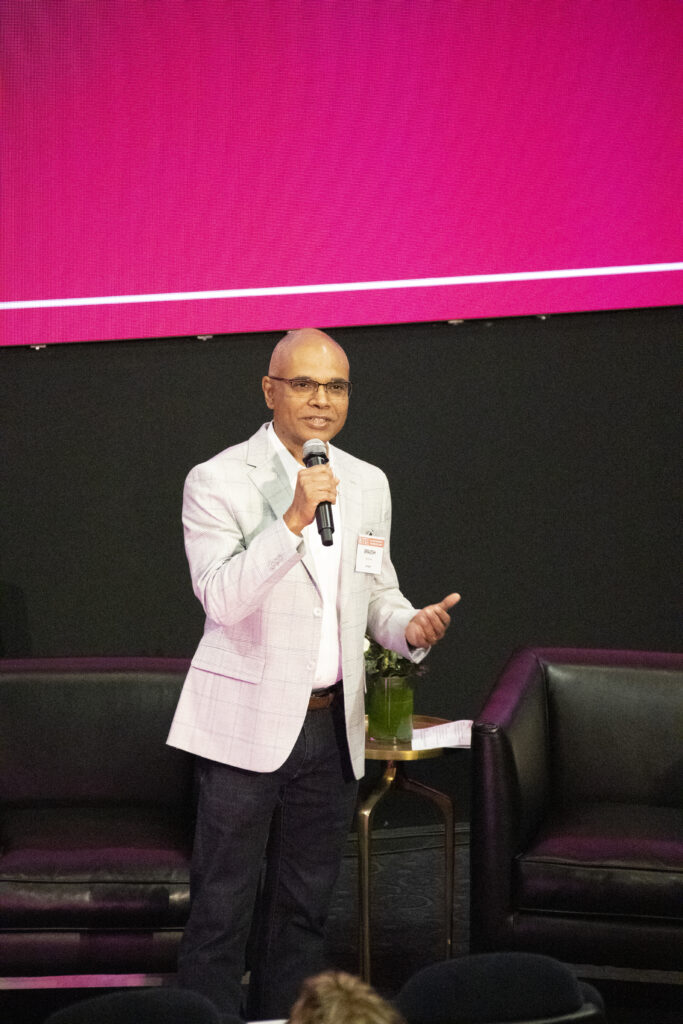M+E Europe

HITS 2023: Data-Related Decisions Can Drive Companies to Peak Efficiency, Genpact Says
Story Highlights
Economic uncertainties this year, combined with reduced consumer appetite for streaming bundles, has weighed heavily on cable and media companies, according to Brajesh Jha, SVP and global head of media, publishing and entertainment at professional services firm Genpact.
Companies are no longer willing to spend their way to increasing their consumer bases, while profitability is now in the spotlight and strategies related to overall cost containment are being debated openly, he said May 23 at the Hollywood Innovation and Transformation Summit (HITS) at The Culver Theater, during the session “Transforming Efficiency for Media and Cable Companies.”
Many media companies have announced sizeable restructuring plans that include taking a harder look at operations and openness towards seeking external help.
 During the session, Jha covered these trends and offered some insights into how people, processes and data related decisions can help drive an organisation towards peak efficiency.
During the session, Jha covered these trends and offered some insights into how people, processes and data related decisions can help drive an organisation towards peak efficiency.
“Genpact came out of GE,” he pointed out. “We were the original experts on process modernisation: figuring out what is the best use of data and technology in any company. And that’s the reason why, as a professional services firm, when we talk to the CEOs and the CFOs of the organisations, we are able to provide very pointed guidance and help them achieve the most optimal operating model.”
Reflecting back about a decade to the first time “computing power evolved to the point that high speed connectivity made it possible for us to see shows sitting in the comfort of our homes in high definition,” he pointed to the early streaming TV hit show House of Cards as one example of content that viewers wanted to see more of.
“With time, what happened is the number of shows … started increasing in size, new platforms started getting launched and you suddenly had Disney Plus and Paramount and Discovery Plus and Apple TV and, before you could count it, you had suddenly content to consume from all of a sudden” that made you realise you didn’t have enough hours in a day to consume it all, he told attendees.
“In parallel, what was also happening is all of the media companies they were going after you as a consumer and trying to increase their subscriber base and the idea was that the more fresh content you roll out to the, consumers, the more subscriber growth you’re going to witness,” he said.
As a result, in 2021, he said: “We saw upwards of up to $5 billion-$6 billion being invested by one single company into fresh content. That’s the amount of money that was pouring into content. And what that also did is that it made it much more different in terms of the revenue mix that people in the beginning were thinking about where the overall media and entertainment revenue came from, and there was a time when your connectivity was the most expensive of all, and then gradually advertisements started taking off and the subscription-based revenue started taking off, and before you know it, [the approximately] $2.3 trillion dollar market size of media and entertainment is now made up of roughly about $1 trillion from advertisement. And it is growing and every year this is likely to grow” by a 5-6% compound annual growth rate.”
Then 2022 ended and “suddenly people noticed that consumer fatigue from all of this subscription cost, the total cost of having to pay for all these bundles, it was skyrocketing to a point where [subscribers] started canceling and the cancellations were most visible with Gen Zs and the Millennials,” he noted.
Within six months, according to one study, “they would cancel up to 40 percent of all subscriptions that they were taking. And in a 12-month period, there was over 30 percent of the consumers [who] were actively considering hopping from one bundle to another,” he said.
What that meant was that, “suddenly the C-suite realised that, ‘oh my God, we are actually not making money in this,’” he said.
“The combined market cap of all the media companies lost over $500 billion in market cap value last year, in 2022, alone, and the subscription losses started mounting” also, he noted. “Some of the companies talked about losing as much as up to $4 billion from their subscription direct-to-consumer business.”
That, he said, meant they had to “start going back to the basics to start asking some of those hard questions: What is the average revenue per user? What kind of churn are we seeing? What is the customer lifetime value of these consumers? Do I have all of the data from the different business units that we have been acquiring over the years?”
Meanwhile, many of the media companies had “expanded through acquisitions, and every business unit was operating as an independent unit doing its own stuff,” he went on to say. “And the data that we got from those business units were either incomplete or inconsistent and … the processes were all sometimes manual.”
And, “in this scenario, this is where Genpact comes in, because we do this for a living,” he said. “We work closely with CEOs, CFOs, COOs. We help them understand the maturity level of their organisation and where they are and how far they have to go in order to take full advantage of technology, data and the power of getting the most efficient operating model.”
During the session, Jha also interviewed special guest Nick Sinovich, VP of finance operations at DirecTV.
To view the presentation, click here.
The Hollywood Innovation and Transformation Summit event was produced by MESA in association with the Hollywood IT Society (HITS) and presented by Amazon Studios Technology, with sponsorship by Fortinet, Genpact, Prime Focus Technologies, Signiant, Softtek, Convergent, Gracenote, Altman Solon, AppTek, Ascendion, CoreSite, EPAM, MicroStrategy, Veritone, CDSA, EIDR and PDG Consulting.









